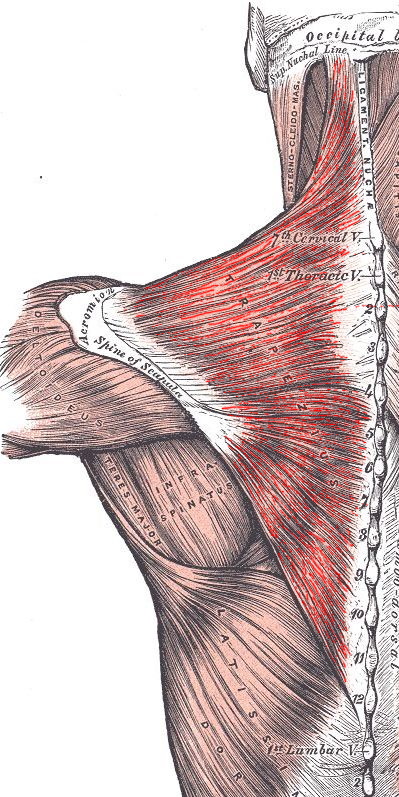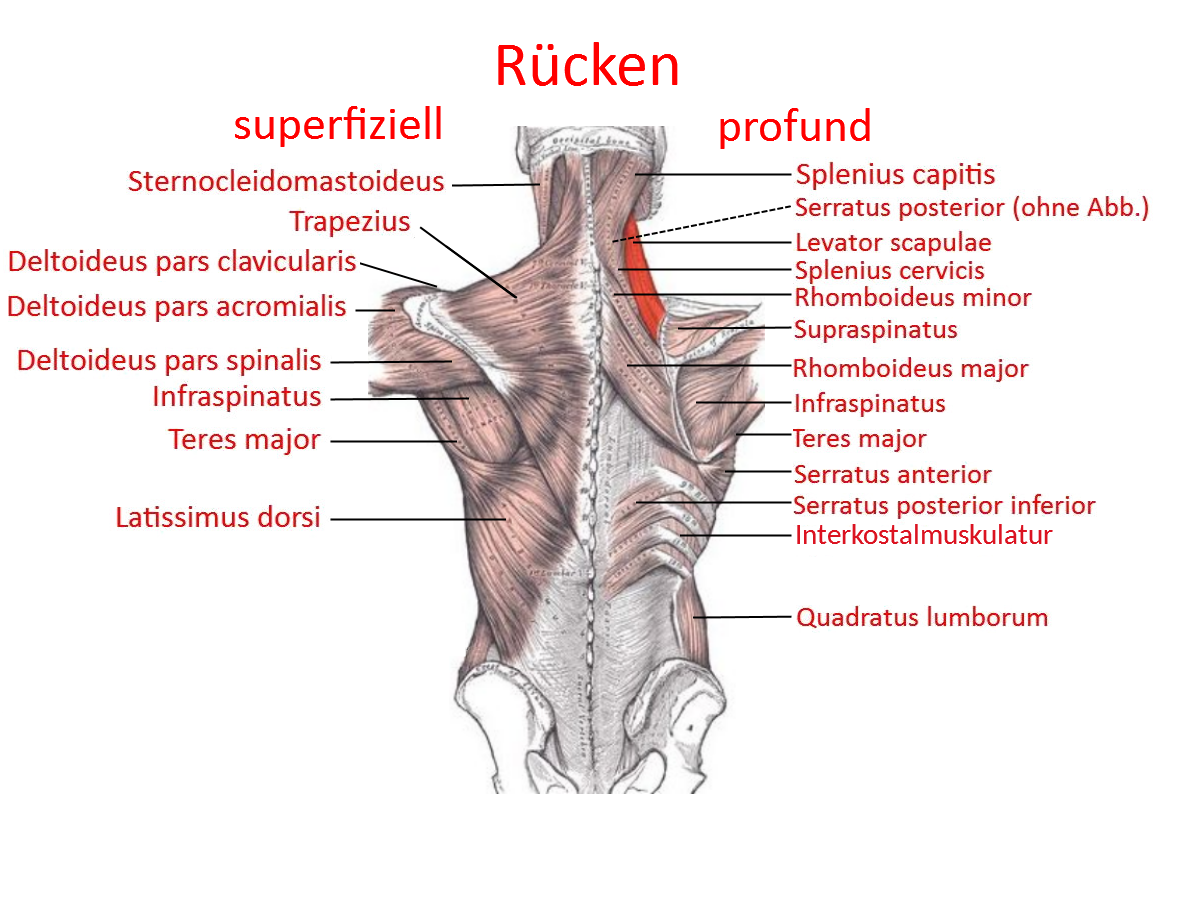yogabook / muscles / trapezius

Contents
Linkmap

Trapezius
This three-headed truncoscapular (truncozontal) shoulder girdle muscle’s main static function is to hold the shoulder blade and thus fix the shoulder girdle in place. It also pulls the shoulder blade and collarbone inwards
- pars descendens originates in the area of the cervical vertebrae and the lower middle occiput, extends to the lateral third of the clavicle and retracts and (to a lesser extent) elevates the shoulder blades.
- pars transversa originates in the area of the 7th cervical vertebra to the 3rd thoracic vertebra, runs to the acromial end of the clavicle, to the acromion and part of the scapular spine).
- pars ascendens originates in the 3rd-12th thoracic vertebrae and rotates the scapula.
pars descendens and pars ascendens cause the external rotation of the shoulder blade (upwards to the inside), which is necessary for lifting the arm above the horizontal. When all three parts of one side work, they turn the head; bilateral action of all parts stretches the cervical spine
Origin: external occipital protuberance on the occipital bone, nuchal ligament, spinous processes of the cervical and thoracic vertebrae
Attachment: Collarbone (clavicle), shoulder blade(acromion and spina scapulae)
Innervation: motorically by ramus externus of nervus accessorius (11. brain nerve), propriozeptive by ramus trapezius of plexus cervicalis (C2 bis C4)
Antagonists:
Movement:
- pars descendens: head rotation, raises the shoulder blades
- pars transversa: pulls the shoulder blades together
- pars ascendens: lowers the shoulder blades
Strengthening postures (292): a distinction must be made here between proportions.
- pars descendens: all postures with powerful elevation of the shoulder blades against gravity; these are often postures with maximum frontal abduction such as downface dog, handstand, right-angled handstand, elbow stand, right-angled elbow stand, urdhva dhanurasana, urdhva hastasana, upavista konasana: with block
- pars transversa: jathara parivartanasana, parivrtta trikonasana, purvottanasana
- pars ascendens: postures with powerful depression of the shoulder blades against gravity, mainly upface dog, tolasana and its variations,
Stretching postures (291): a distinction must be made here between proportions.
- pars descendens: postures in which the shoulder blades are depressed can stretch the descending part, especially with additional head rotation or lateral flexion, e.g. 2nd warrior pose, upface dog, gomukhasaha
- pars transversa: all postures in which the shoulder blades are stretched(lateralized) or protracted sideways away from the spine, in particular 2nd warrior pose, garudasana, trikonasana: standing against the wall, maricyasana 1, maricyasana 3, vasisthasana, ardha_vasisthasana, hasta padangusthasaha htm sideways
- pars ascendens: postures with elevation of the shoulder blades with wide frontal abduction stretch the ascending part, e.g: downface dog, handstand, right-angled handstand, elbowstand, right-angled elbowstand, urdhva dhanurasana
Tests
Trapezius force test, Shoulder caudalization test
